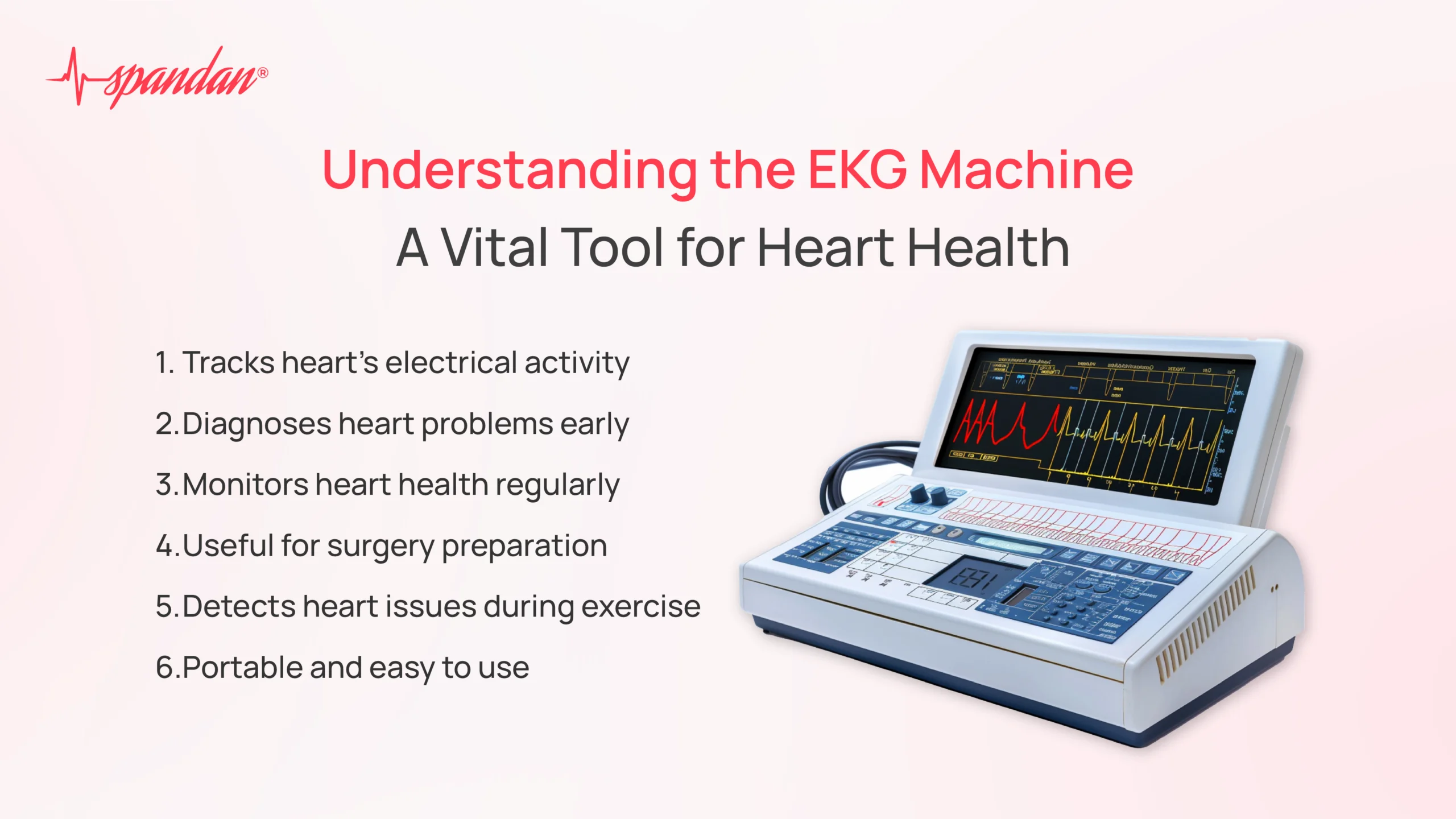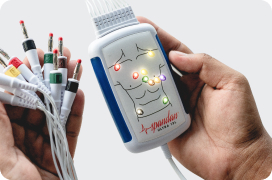
Related Article
Author:- Mr. Ritesh Sharma
The heart, a powerful muscle at the core of our circulatory system, beats relentlessly to sustain life. Monitoring its activity is crucial, and one of the most effective tools for this purpose is the EKG machine. An EKG machine, also known as an electrocardiogram machine, records the electrical activity of the heart over a period, providing invaluable insights into its function and health.
What is an ECG Machine?
An ECG machine measures the electrical impulses that cause the heart to contract and relax, producing a waveform that reflects the heart’s activity. These impulses are captured through electrodes placed on the skin, usually on the chest, arms, and legs. The machine then amplifies these signals and records them, producing a graph known as an electrocardiogram.
How Does an EKG Machine Work?
The ECG machine operates on a simple yet sophisticated principle. When the heart muscle depolarizes, it generates an electrical impulse. This impulse travels through the heart, triggering its contraction. The electrodes on the skin detect these impulses and transmit them to the electrocardiogram machine. The machine amplifies these signals and records them, creating a waveform that represents the heart’s electrical activity.
The typical electrocardiogram machine has three main components:
- Electrodes: Small, adhesive patches that are placed on the patient’s skin to detect electrical impulses.
- Amplifier: Increases the strength of the electrical signals from the heart.
- Recorder: Converts the electrical signals into a visual graph, the electrocardiogram.
Why is the EKG Machine Important?
The EKG machine is a critical tool in diagnosing and monitoring various heart conditions. Here are some of its primary uses:
1. Diagnosing Heart Conditions
The EKG machine can detect a wide range of heart problems, including arrhythmias (irregular heartbeats), myocardial infarctions (heart attacks), and ischemia (reduced blood flow to the heart). By analyzing the patterns in the
EKG waveform, doctors can identify abnormalities and determine the appropriate treatment.
2. Monitoring Heart Health
For patients with known heart conditions, the EKG machine is used to monitor their heart’s activity over time. This ongoing monitoring helps doctors assess the effectiveness of treatments and make necessary adjustments.
3. Preoperative Assessments
Before undergoing surgery, patients often require an EKG to ensure their heart is healthy enough to withstand the procedure. The EKG machine provides a quick and non-invasive way to evaluate heart health.
Even for individuals without known heart conditions, routine EKGs can be beneficial. The EKG machine can detect early signs of heart disease, allowing for timely intervention and prevention.
Types of ECG Machines
There are several types of EKG machines, each designed for specific purposes:
1. Resting EKG Machine
The most common type, a resting EKG machine records the heart’s activity while the patient is at rest. This type is typically used in routine check-ups and preoperative assessments.
2. Stress EKG Machine
A stress EKG machine records the heart’s activity while the patient is exercising. This test is used to evaluate how the heart performs under physical stress and can help diagnose conditions like coronary artery disease.
3. Holter Monitor
A Holter monitor is a portable EKG machine that records the heart’s activity continuously over 24 to 48 hours. It is used to monitor patients with intermittent symptoms that may not appear during a standard EKG test.
4. Event Monitor
Similar to a Holter monitor, an event monitor is a portable EKG machine used over an extended period, typically 30 days. Patients activate the monitor when they experience symptoms, allowing for targeted recording and analysis.
Advancements in EKG Machines
The field of cardiology has seen significant advancements in EKG machines. Modern devices are more compact, portable, and user-friendly. Some notable advancements include:
1. Wireless EKG Machines
Wireless EKG machines eliminate the need for cumbersome wires, making the process more comfortable for patients and easier for healthcare providers. These machines transmit data to a central system in real-time, enabling remote monitoring and faster diagnoses.
2. Smart EKG Machines
Integration with smart technology allows EKG machines to connect with smartphones and other devices. Patients can perform EKG tests at home, and the data can be instantly shared with their doctors for analysis.
3. AI-Powered EKG Machines
Artificial intelligence has revolutionized the interpretation of EKG results. AI-powered EKG machines can analyze data quickly and accurately, identifying patterns that might be missed by the human eye. This technology enhances diagnostic accuracy and speeds up the decision-making process.
The Role of Portable EKG Machines
Portable EKG machines have become increasingly popular due to their convenience and accessibility. These devices, like the Spandan portable EKG machine, allow individuals to monitor their heart health from the comfort of their homes. Portable EKG machines are lightweight, easy to use, and provide instant results, making them ideal for patients with chronic heart conditions or those who require frequent monitoring.
The EKG machine is an indispensable tool in the field of cardiology. Its ability to record and analyze the heart’s electrical activity provides critical insights into heart health, aiding in the diagnosis, monitoring, and prevention of heart conditions. With advancements in technology, EKG machines have become more accessible, portable, and accurate, empowering patients and healthcare providers alike.
Whether in a clinical setting or at home, the EKG machine continue to play a vital role in safeguarding heart health. As technology evolves, we can expect even more innovative solutions to emerge, further enhancing our ability to monitor and protect the heart, the engine of life.




